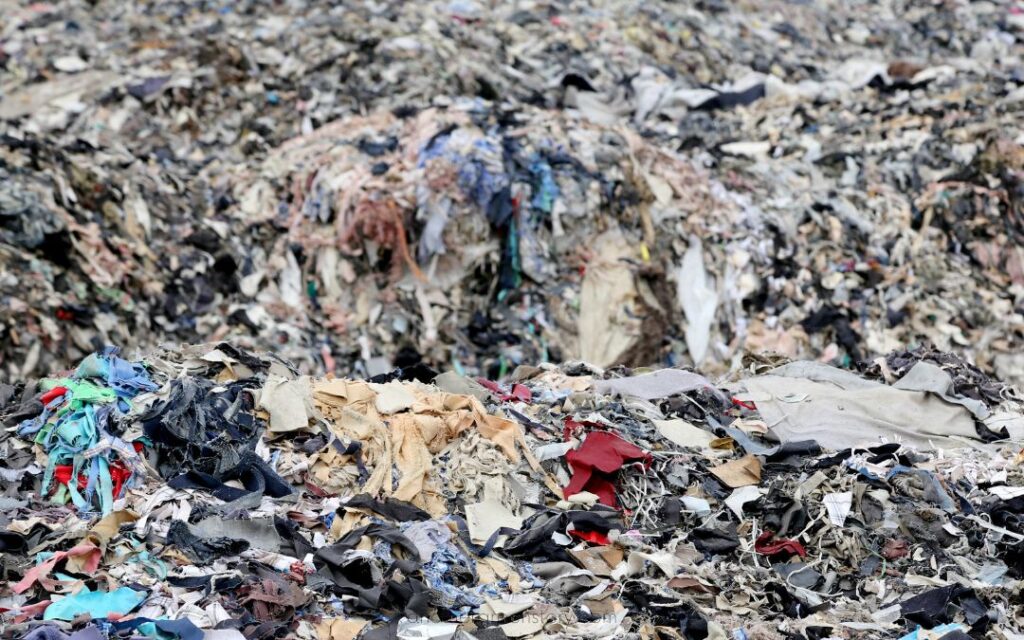The world of fashion is a glittering, glamorous one, but behind the scenes lies a darker truth. Fast fashion has taken over our lives, driving us towards an environmental catastrophe with every cheap, quickly produced item we buy. It’s time to wake up to the reality of the industry’s impact on our planet and on people. As we delve into the shocking dirty secrets about the industry, we’ll uncover the harsh realities of unethical working conditions, hazardous waste, and a devastating impact on our world. Join us on this journey towards a more conscious and sustainable future, where we can make a difference by making informed choices.
11 Dirty secrets about the Fashion Industry – they don’t want you to know
- Fast fashion is the 2nd most polluting industry on the planet, responsible for climate crisis and human misery. (Geneco.uk 2022)
- The fashion industry discards 2.150 clothing pieces p/second due to overproduction (Bloomberg, 2022)
- 780 million used clothes arrive in Ghana every year, with 40% ending up in landfills (Independent.com UK)
- Responsible for 8-10% greenhouse gases emissions globally – 1.2 billion tonnes annually. This is more that international flights + maritime shipping combined. (BBC, 2020 & EU Monitor, 2022)
- Producing 1 pair of jeans cost 8.000 liter water. This will take 7 years for 1 person to drink. (UN, 2019)
- 70 million barrels of oil are used each year, to produce the most commonly used polyester fibre, which takes more than 200 years to decompose. (CFDA.com, 2021)
- Fashion industry is a hub for worker exploitation: paid some of the lowest wages or even unpaid, 80% garment workers are women. (Good Clothes Fair Play, 2022)
- Fashion Industry uses enough water to quench the thirst of 110 million people for an entire year. (Common Objective)
- Synthetic textiles contribute 16-35% of global microplastics released in the ocean (European Environment Agency, 2022)
- 80% of cotton is genetically modified, used vast amounts of water and chemicals (ISMD, 2017)
- Textile dyeing is the 2nd largest polluter of water globally. (UNEP, 2018)
How Fast Fashion Impacts the World we Live In
Fast fashion is a term used to describe clothing produced quickly and cheaply, often in response to current trends. Companies like: H&M, Zara, Primark, ASOS, Forever21 and many many more. They produce more than 50 collections per year, they create a culture of consume and dispose.
The true cost of fast fashion can be found in the ecological and social consequences it has on the world. For example, the production of synthetic fabrics releases microfibers into our rivers, lakes, and oceans, which are toxic and non-biodegradable. Moreover, these fibers are ingested by fish and small creatures, ultimately harming the ecosystem.
By the same token, child labor, low wages, and hazardous working environments are common in the garment-making industry. By buying into fast fashion, we dismiss the importance of humane working conditions and the negative impact of mass production.
We Throw Away 92 Million Tons of Textiles Every Year

It’s estimated that we throw away 92 million tons of textiles every year, contributing to the growing problem of landfill waste. Synthetic fibers used in fast fashion items take up to 200 years to decompose. When clothes are thrown out rather than being properly disposed of, they release greenhouse gases that harm the environment. This is why we need to aim for more sustainable options, such as clothing made from natural and renewable materials like bamboo, organic cotton, or recycled fabrics.
The Rise of Fast Fashion Created a Culture of Consume & Dispose
The rise of fast fashion has created a culture of disposability, where we consume and dispose of our clothes without considering the environmental implications. To address this issue, we need to shift our mindset to quality over quantity. Investing in clothes made from durable materials, that can withstand multiple seasons and years of wear, pays off in the long run. We should also support brands with transparency and a commitment to sustainability. This way, we encourage the production of items that are made to last, produced ethically, and designed to reduce waste.

Shifting Our Mindset: Prioritising Quality and Sustainability in Fashion Consumption
At the end of the day, the problem with fast fashion isn’t only about the clothes we wear. It is about the impact we have as consumers. We have the power to make a change in the fashion industry by being informed about the facts, changing our habits, and influencing the market. We should demand change from our clothing brands, choose sustainable fabrics, and make smarter choices in our purchasing behaviours. Together, we can challenge the norms of fast fashion and embrace a more eco-friendly and considerate way of consuming.

Ready to Transform Your Closet in a Sustainable H(e)aven?
Because you want to look damn good and be nice to the planet + people at the same time. Subscribe to our list. We will give you all of this and more. Join our movement towards a more eco-friendly and stylish future! You’re just one click away from your transformation!

